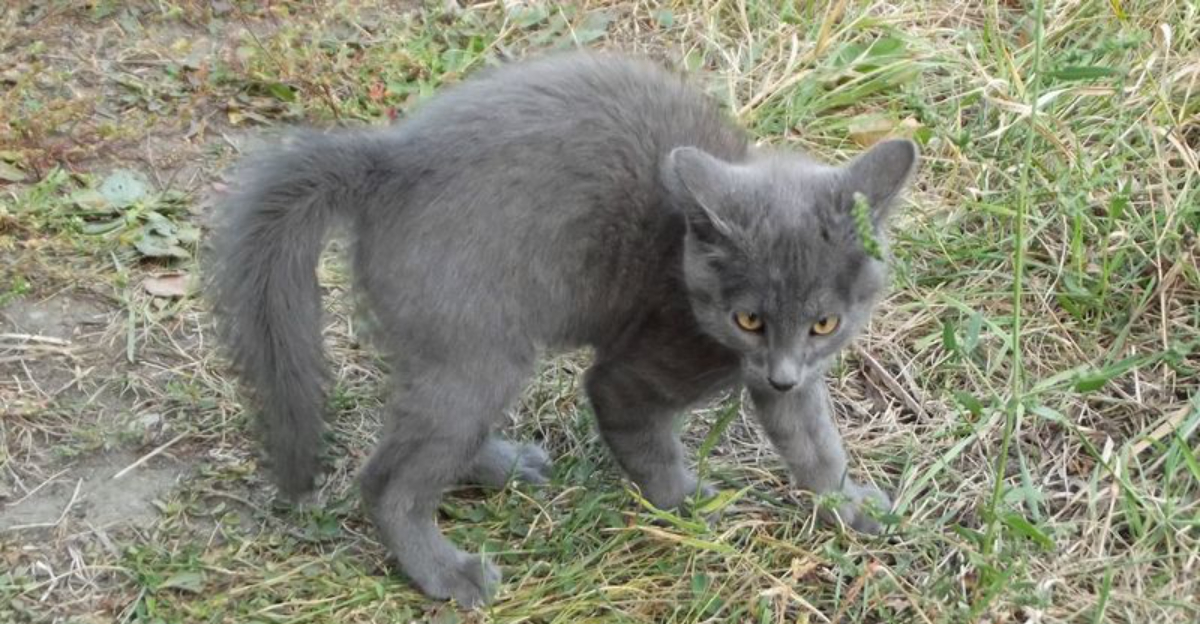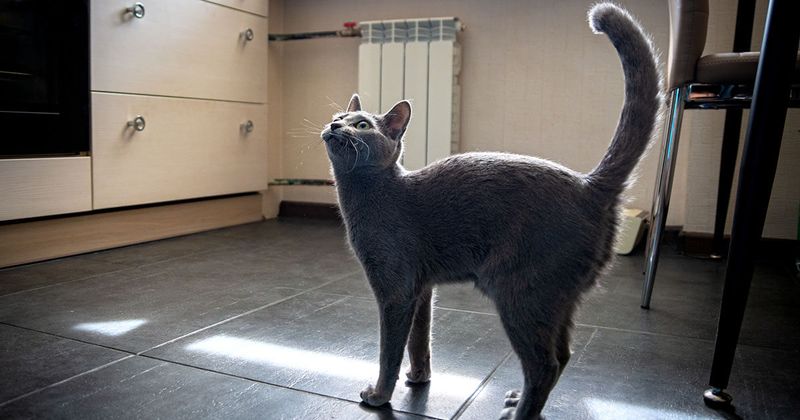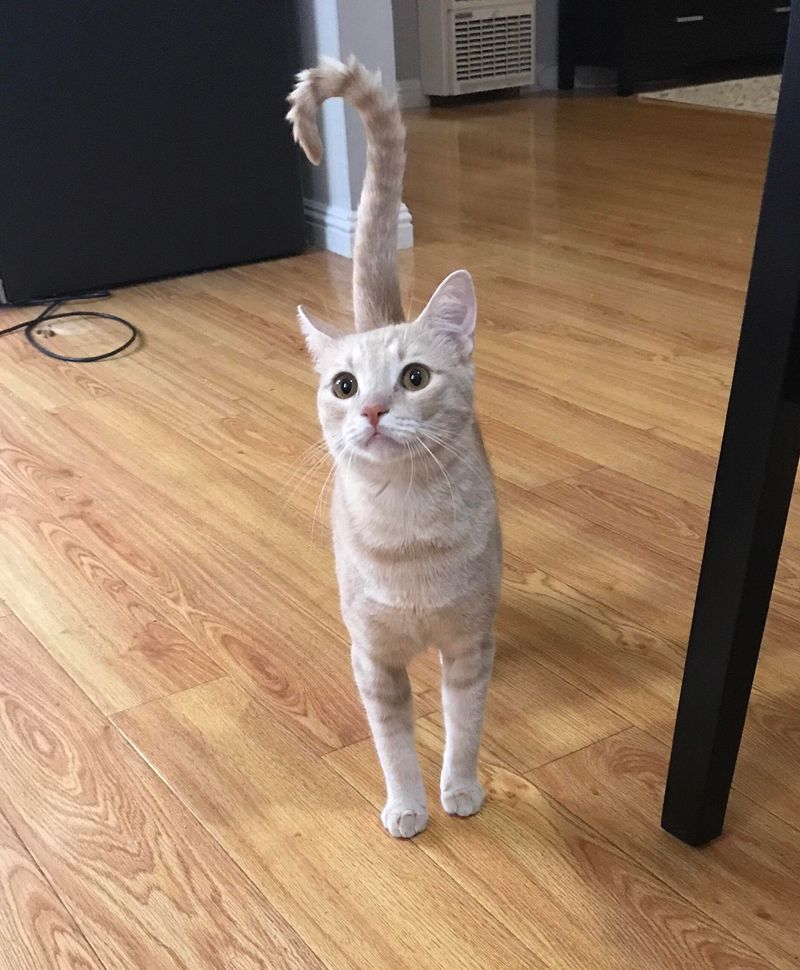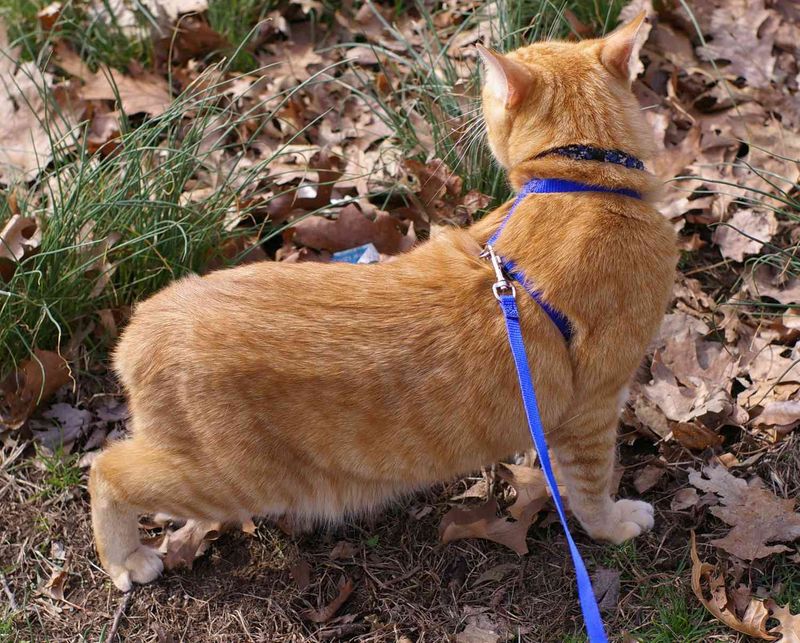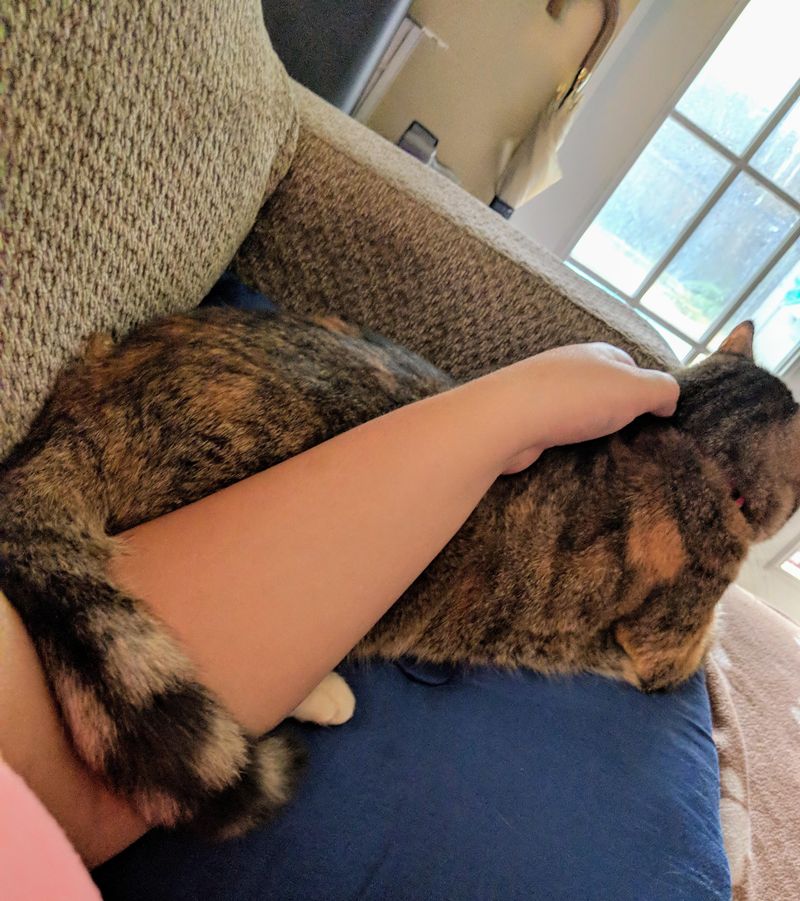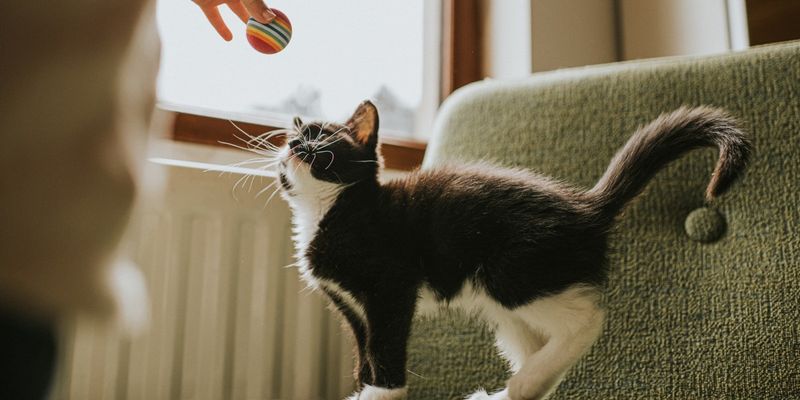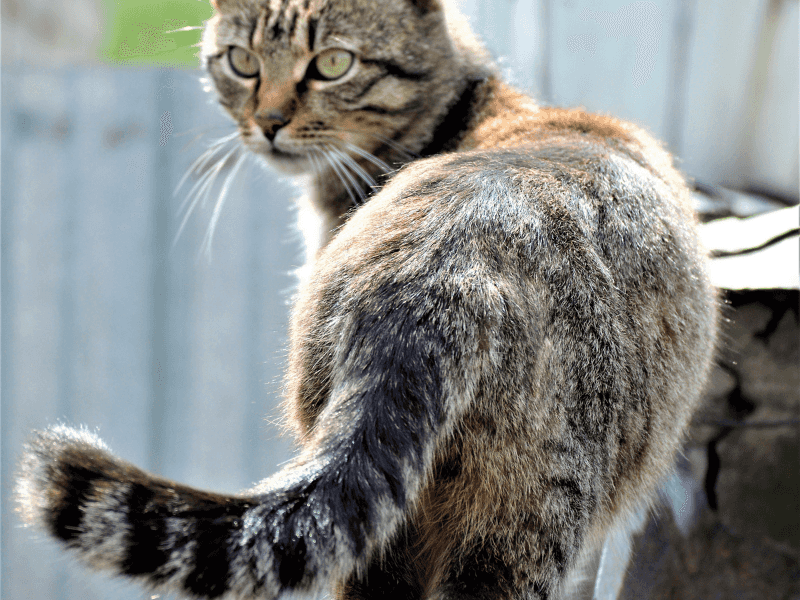📖 Table of Content:
Cats communicate a great deal through the movements and positions of their tails, offering insights into their emotions and intentions. This blog post will explore the fascinating world of feline tail language, helping cat owners understand what their furry friends are trying to convey. Observing these tail signals can enhance the bond between cats and humans, making interactions more meaningful and empathetic. From expressing happiness to signaling danger, a cat’s tail is a versatile tool of communication, and understanding it can lead to a more harmonious coexistence.
1. Tail Held High
When a cat walks with its tail held high, it’s like a beacon signaling joy and assurance. Cats use this tail position to express confidence and approachability, often seen when greeting familiar faces. This elevated posture indicates a happy and comfortable feline, ready to engage. It’s a positive sign, whether the cat is exploring its domain or meeting a beloved human. In essence, the tail held high is akin to a smile, a beacon of trust and friendliness. Recognizing this signal can help in fostering a warm and inviting environment for your cat.
2. Tail Curved into a Question Mark
A cat with its tail curved into a question mark is a delightful sight, embodying curiosity and playfulness. This unique tail shape signals an open and friendly mood, inviting interaction. You might notice this position when your cat is eager to explore or engage in play. It’s an invitation to a social encounter, a gentle nudge to join in the fun. This expressive tail form conveys that the cat is in a receptive and amiable state, making it the perfect time for bonding. Embrace these moments to strengthen your connection.
3. Tail Held Low or Tucked Under
When a cat’s tail is held low or tucked between its legs, it signals unease or submission. This posture often manifests when the cat feels threatened, stressed, or anxious. The tucked tail is an attempt to appear smaller and less conspicuous, a protective measure in intimidating situations. Identifying this subtle cue can be crucial in alleviating the cat’s distress. Creating a calm and secure environment can help restore confidence. Understanding this signal enables owners to provide comfort and reassurance, reinforcing trust and safety in their feline companions.
4. Puffed-Up Tail
A puffed-up tail is an unmistakable sign of fear or aggression in cats, resembling a bottlebrush. This dramatic display is designed to make the cat appear larger and more intimidating to potential threats. When a cat’s tail fluffs up, it’s often reacting to sudden surprises or perceived dangers. Recognizing this signal is vital for preventing conflicts and ensuring safety. Owners should approach with caution, giving the cat space to calm down. This reaction underscores the cat’s instinct to protect itself, highlighting its sensitivity to environmental changes.
5. Tail Wrapped Around Another Cat or Person
When a cat wraps its tail around another cat or a person, it’s a gesture of affection and camaraderie. This behavior signifies trust and a desire to bond, akin to a human hug. Often observed in social or relaxed settings, this tail position indicates the cat feels secure and connected. It’s an endearing expression of friendship and warmth, inviting reciprocation. For cat owners, recognizing this affectionate gesture can enhance companionship, reinforcing the emotional bond shared with their feline friends. Embrace these moments of closeness to deepen your relationship.
6. Slow Swishing
The slow, rhythmic swish of a cat’s tail is a telltale sign of concentration and intent. This motion is often seen when a cat is engrossed in watching something intriguing, whether it’s a toy or potential prey. The deliberate movement indicates focus and anticipation, a prelude to action. Understanding this signal can enrich interactive play experiences, aligning with the cat’s natural instincts. By engaging with your cat during these moments, you can stimulate their curiosity and mental acuity, fostering a fulfilling and dynamic environment.
7. Rapid Flicking or Lashing
Rapid flicking or lashing of a cat’s tail is a strong indicator of agitation or annoyance. This swift movement communicates discomfort or displeasure, warning others to keep their distance. Often observed when a cat is upset or overstimulated, this tail action is a clear signal of irritation. Recognizing this behavior helps in respecting the cat’s space and understanding its boundaries. Creating a peaceful and less stimulating environment can alleviate the cat’s stress, promoting a sense of calm and well-being. This awareness is key to nurturing a respectful relationship.
